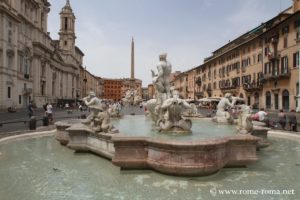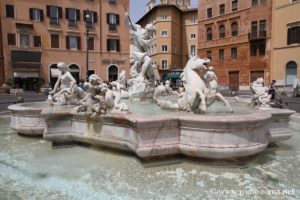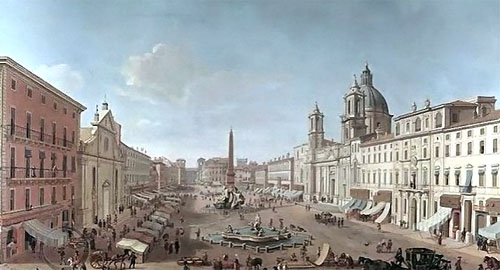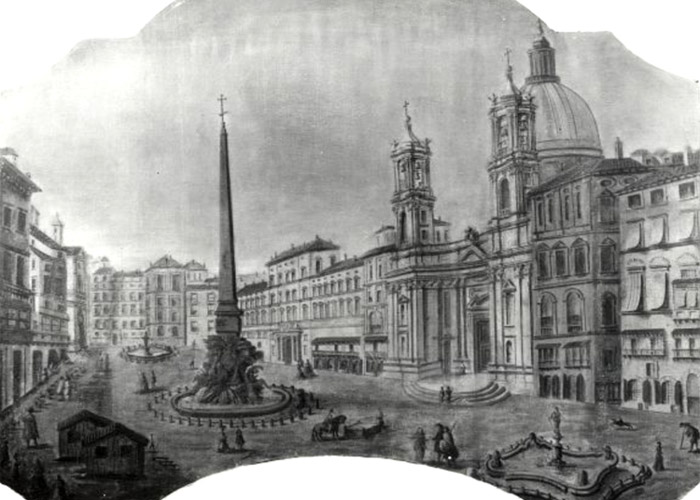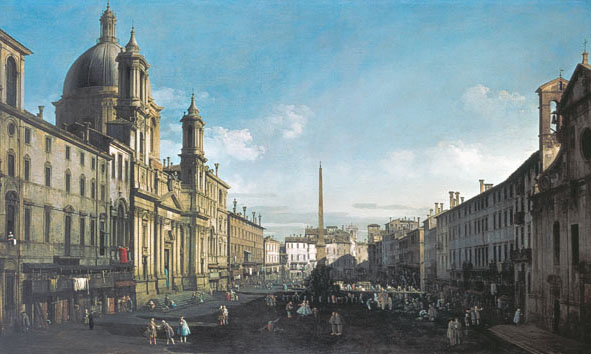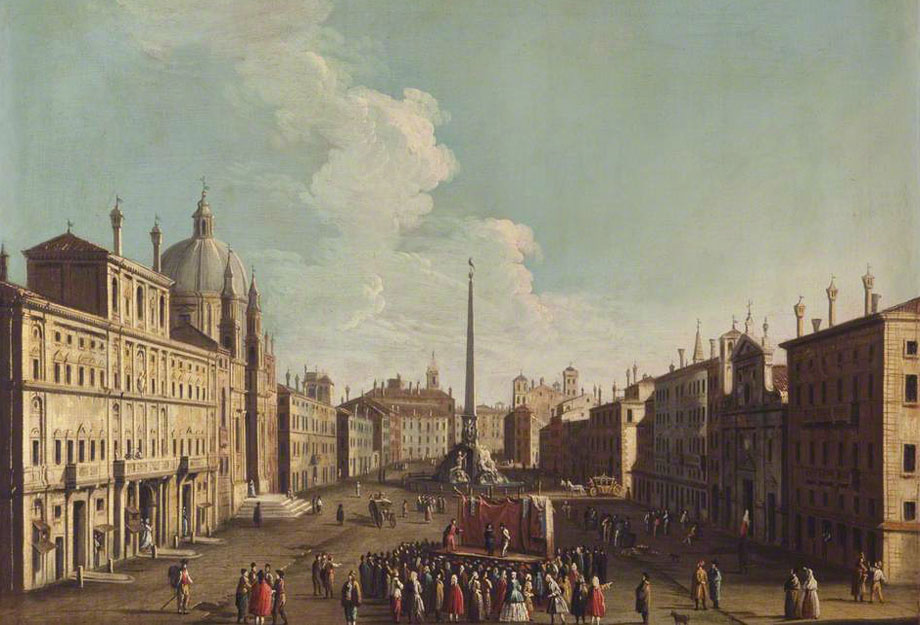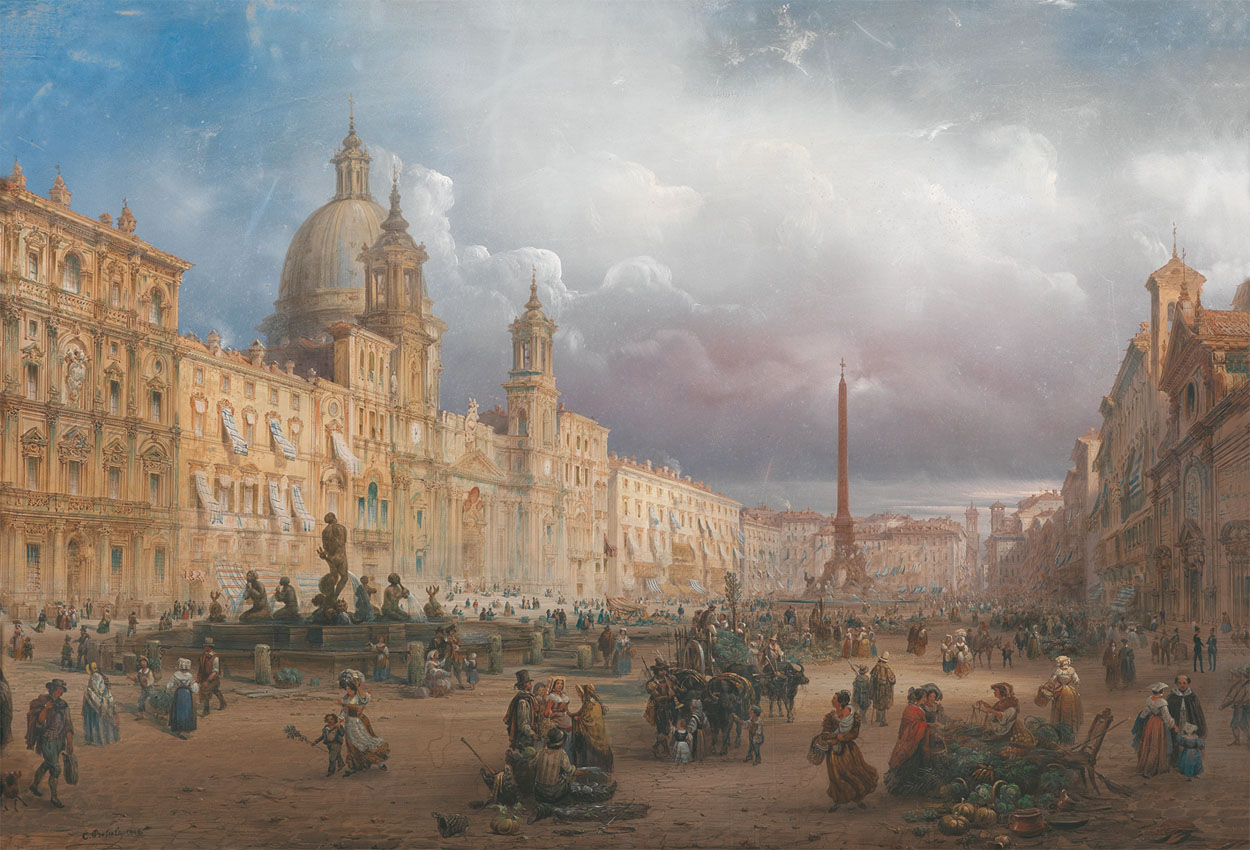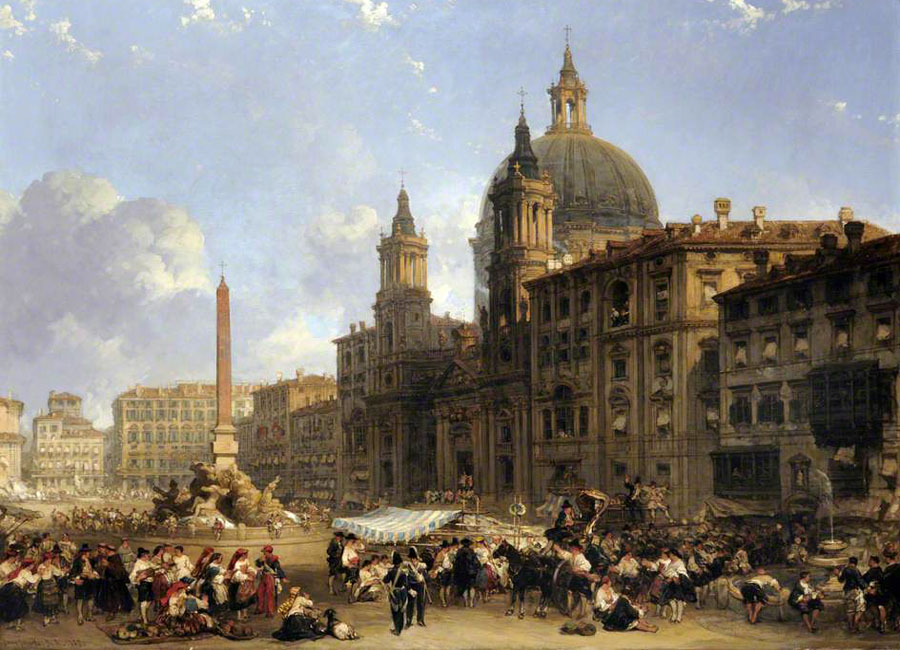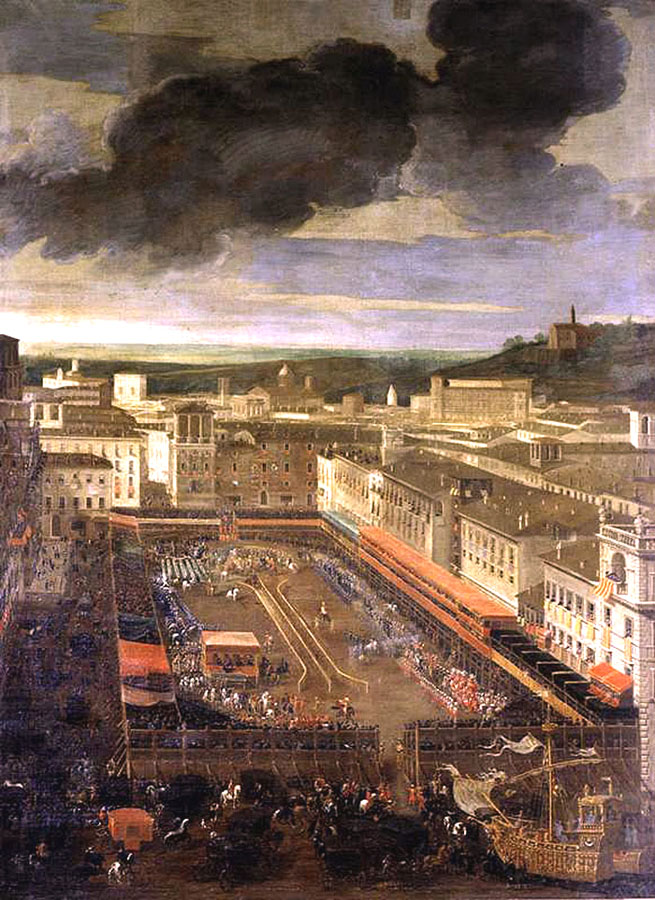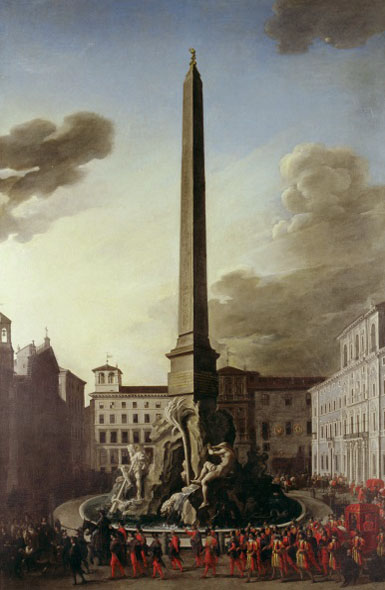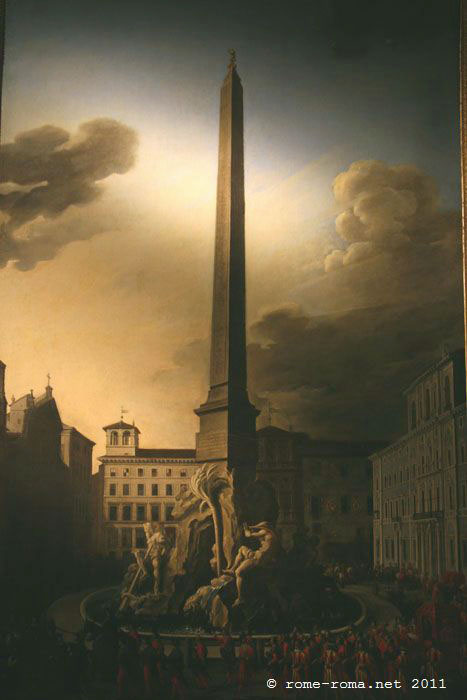The magnificent Navona Square, Piazza Navona in Italian, is among the most iconic squares of Rome. One of the liveliest and most frequented places in the city, with painter‑artists, chic café and restaurant terraces.
Baroque found one of its most majestic expressions here in the buildings and the three beautiful fountains, most notably the famous Fountain of the Four Rivers in the center, a work by Bernini, surmounted by an Egyptian obelisk.
During the Christmas holiday season, the square transforms, hosting booths, games, and merry-go-rounds.
Visiting the square: masterpieces
In 1651, Pope Innocent X commissioned the construction of the great Fountain of the Four Rivers, a masterpiece created by Bernini. This fountain, at the center of the square, features four statues symbolizing the major rivers: the Nile, the Ganges, the Danube, and the Río de la Plata. The obelisk rising at the center of the fountain comes from the Circus of Maxentius along the Appian Way, although it was originally installed in the Temple of Isis.
The Moor Fountain, located on the south side, was designed by Giacomo della Porta in 1576 and modified by Bernini as early as 1652. The central statue was sculpted by Bernini in 1655.
On the north side of the square, the Neptune Fountain was also designed in the 16th century by Giacomo della Porta. Its current statues date from the 19th century, including a representation of Neptune sculpted by Antonio della Bitta.
The beautiful church of Sant’ Agnese in Agone, with its twin bell towers, dominates the west side of the square. It was built in the 17th century at the initiative of Innocent X and carried out by Borromini, Girolamo and Rainaldi.
Next to the church, the Pamphilj Palace was the family palace of the Pamphilj, renovated starting from 1644 under the direction of Pope Innocent X, formerly Cardinal Giovanni Battista Pamphilj. It houses magnificent frescoes by Pietro da Cortona, a gallery designed by Borromini, and other precious works in its rooms. Today, one wing of the palace houses the Embassy of Brazil in Italy.
→ For more details and to discover the monuments, refer to the page Visit and photos of Navona Square
History: from Domitian’s Stadium to the fountains
Extending nearly 240 meters, the square retained the shape of the former Stadium of Domitian, built in the 1st century AD, parts of its outer arches still survive beneath the current paving. This stadium was the setting for Greek sports, such as athletics, beloved by Emperor Domitian, though viewed as too unmanly by Romans. Later, gladiatorial combats were also organized here. The place thus took the name Agonis, meaning “games” in Greek, before becoming in Agone. As with other entertainment venues of the Empire, the stadium was surrounded by taverns and brothels.
From abandonment to market square and fountains
The stadium remained active until the 5th century, then the ground gradually sank over time. Around the year 1000, the site became enclosed property annexed to an abbey, housing gardens and a small church dedicated to Saint Agnes. The first permanent constructions appeared much later, with significant developments dating from the Renaissance. In the 16th century, an excavation in the ground allowed extraction of the stadium materials, which were used in new construction projects.
A significant market was moved here in the 15th century, and Navona Square gradually became a popular meeting place, hosting festivals and various events. It was paved in 1488. Thanks to the presence of the Spanish church of San Giacomo (Saint James), the Spaniards introduced here the Easter Monday carnival, which was previously held on the Via del Corso or in Testaccio.
Gregory XIII Boncompagni (1572–1585) had installed three fountains here, including a watering trough for animals supplying the market.
The Baroque transformation
It was in the 17th century that the square underwent serious embellishment, becoming one of the most remarkable achievements of Roman Baroque. The first initiative came from Cardinal Giovanni Battista Pamphilj, who became Pope Innocent X in 1644, and had begun around 1630 to renovate the family properties and erect the Pamphilj Palace. At that time, the Pamphilj family rivaled other great Roman families such as the Farnese and the Barberini. Under his pontificate as Innocent X, the three current fountains, the church, and the palace were developed. A landmark event made the square even more famous: on June 23, 1652, the square was intentionally flooded, an unforgettable spectacle for its contemporaries.
The inauguration on June 23, 1652 made Navona Square famous, when Innocent X and his sister-in-law Donna Olimpia decided to purposely flood the square by blocking the drainage of the three fountains. Water covered the central concave part of the square, allowing Romans to indulge in unique entertainments.
The Navona Square lake then became a summer custom for nearly two centuries. Every August weekend, the square was flooded, until 1866 under the pontificate of Pius IX, who did not appreciate the festivities. At the end of the 19th century, Navona Square was paved with sampietrini, and a convex central walkway was installed, preventing any future flooding. Today, the square retains its festive atmosphere, especially during the Christmas period, when booths, games and merry‑go‑rounds are installed.
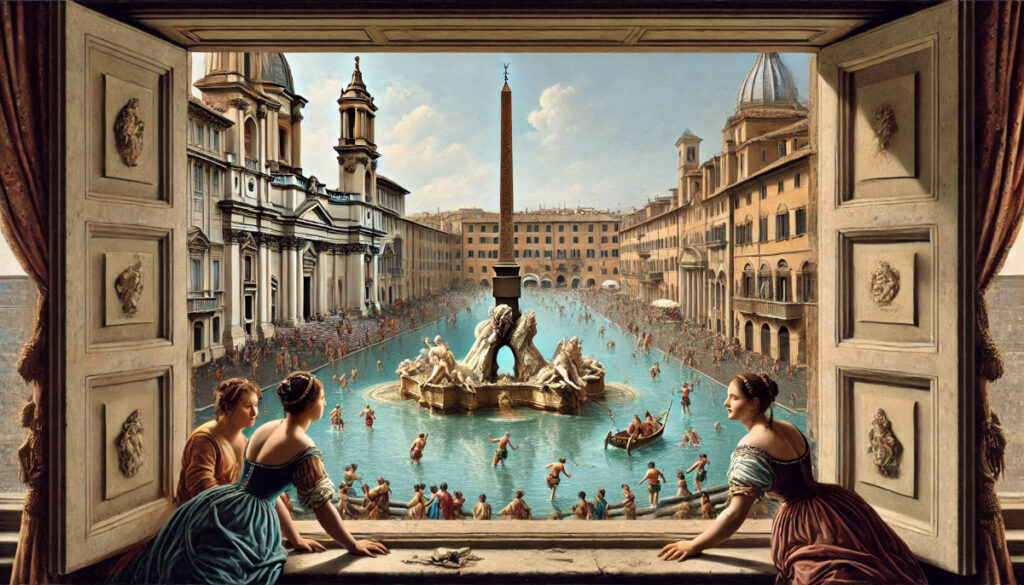
Map and address
Address : Piazza Navona, 00186 Roma RMIf you see this after your page is loaded completely, leafletJS files are missing.
- Fountains and monuments of Piazza Navona
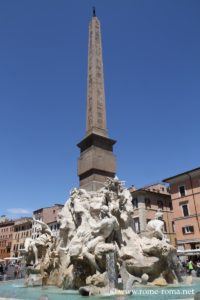 Three very beautiful fountains are located in Piazza Navona, including the Baroque masterpiece of the Fountain of the Four Rivers at the center created by ...
Three very beautiful fountains are located in Piazza Navona, including the Baroque masterpiece of the Fountain of the Four Rivers at the center created by ...
Ancient views in art
Information
| Piazza Navona |
Sources and links to learn more:
|
Photo gallery
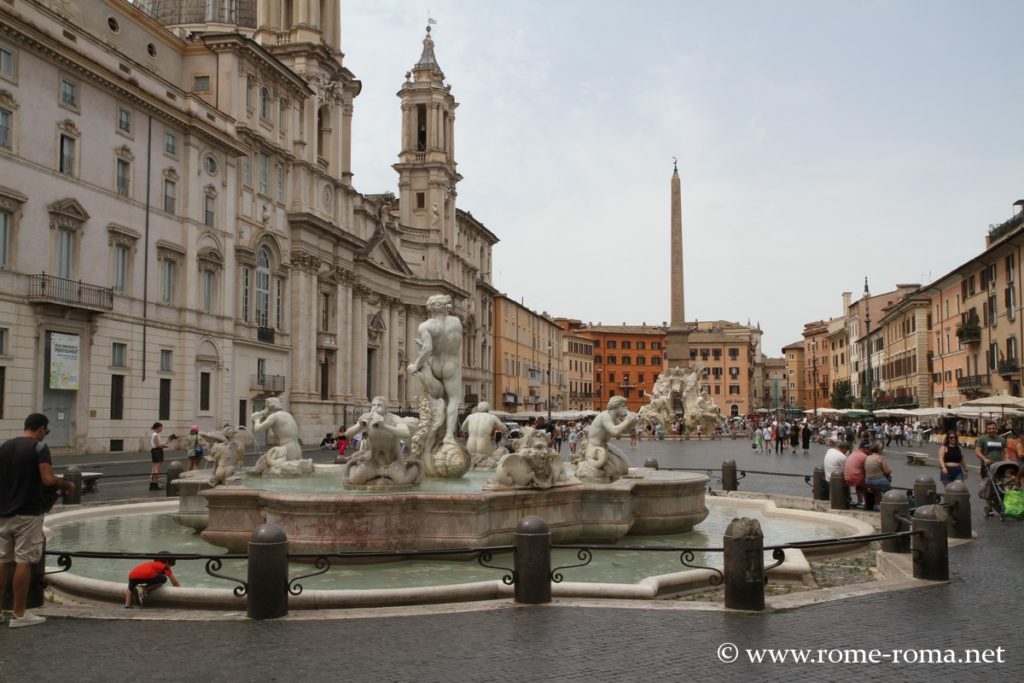
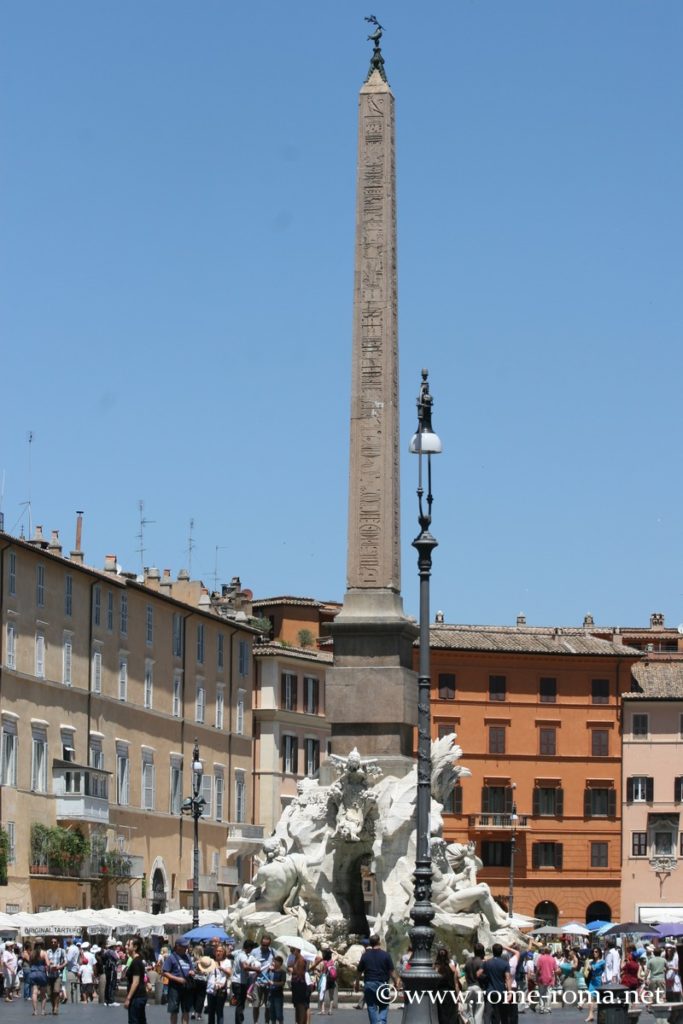
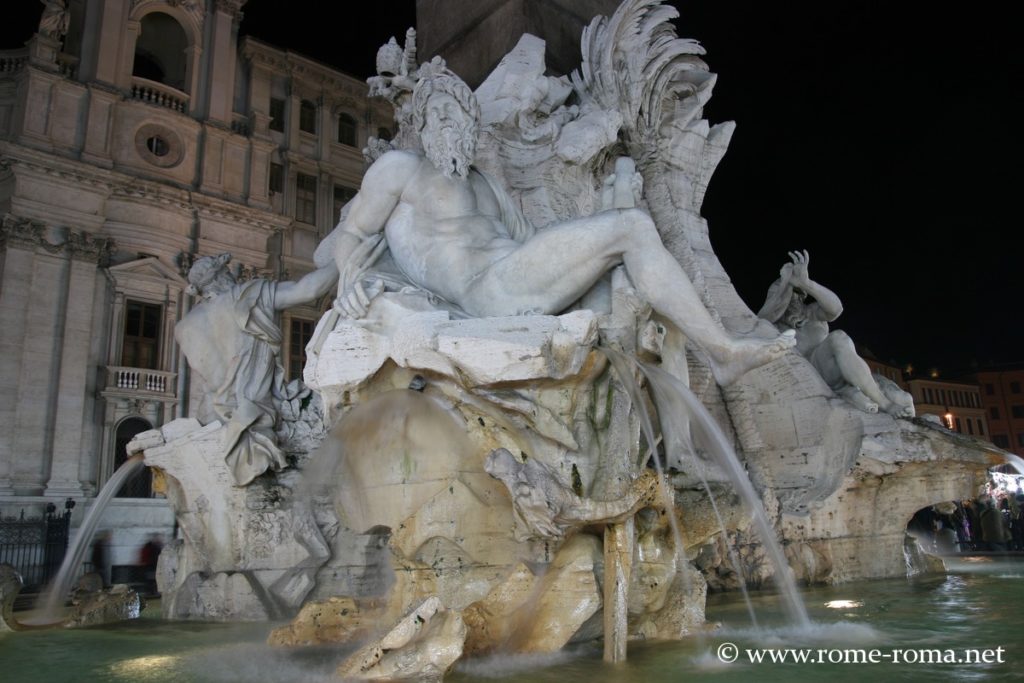
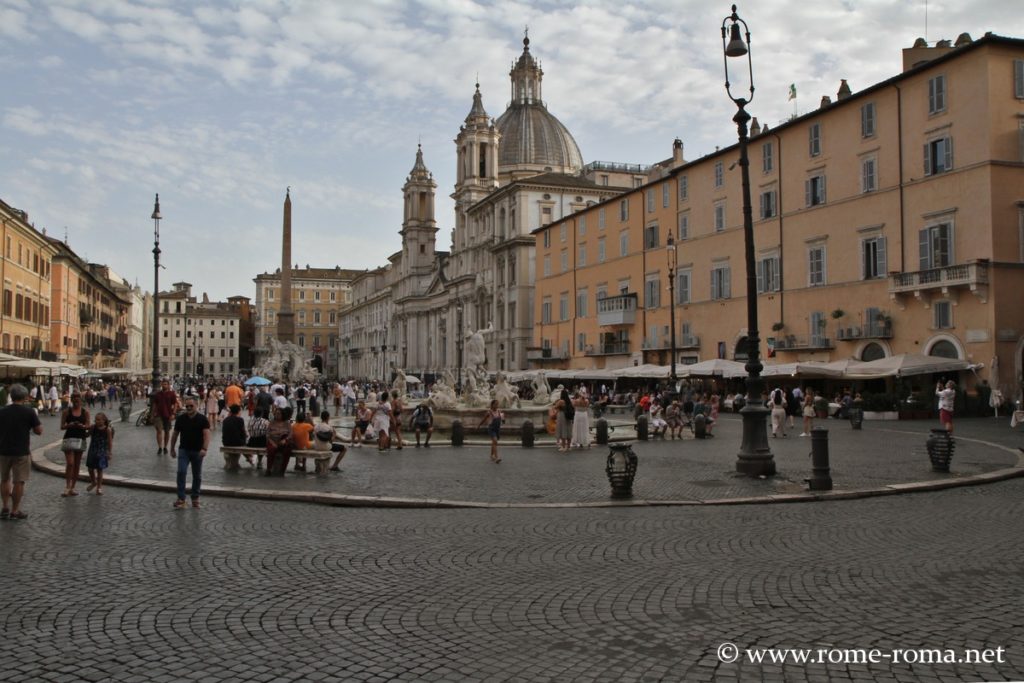
→ See also more photos of Piazza Navona

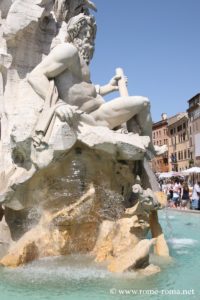
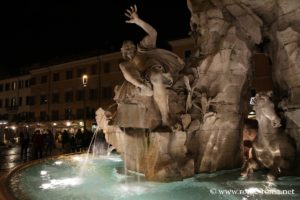
→ See also the section dedicated to the Fountain of the Four Rivers
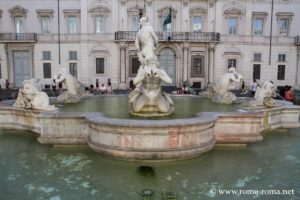
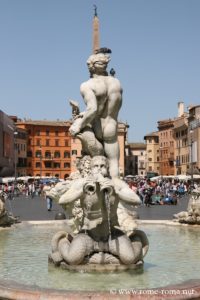
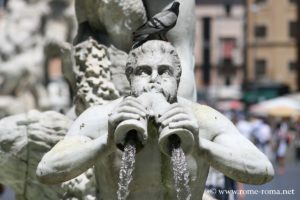
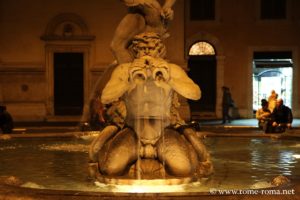
→ See also the section dedicated to the Fountain of the Moor
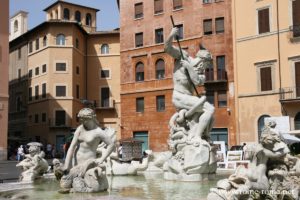
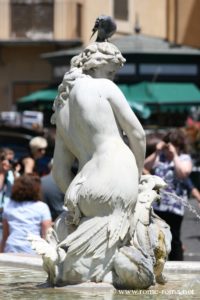
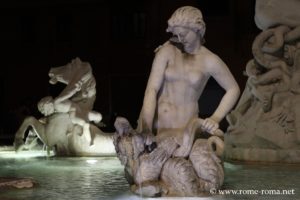
→ See also the section dedicated to the Fountain of Neptune (Fontana di Nettuno)

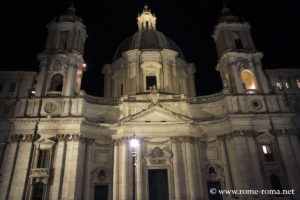
→ The churches of Sant’Agnese in Agone, Our Lady of the Sacred Heart, and the Palazzo Pamphilj

